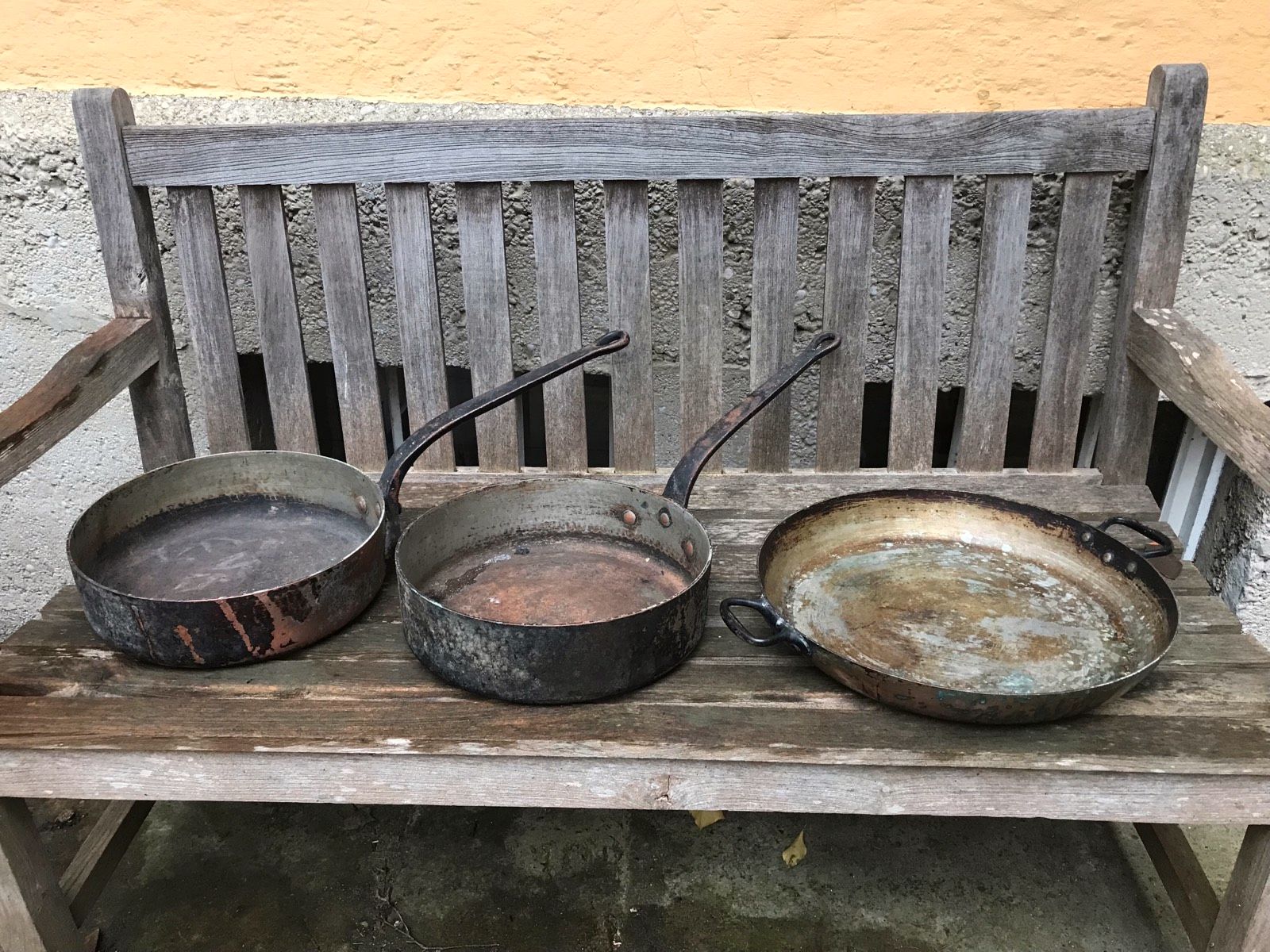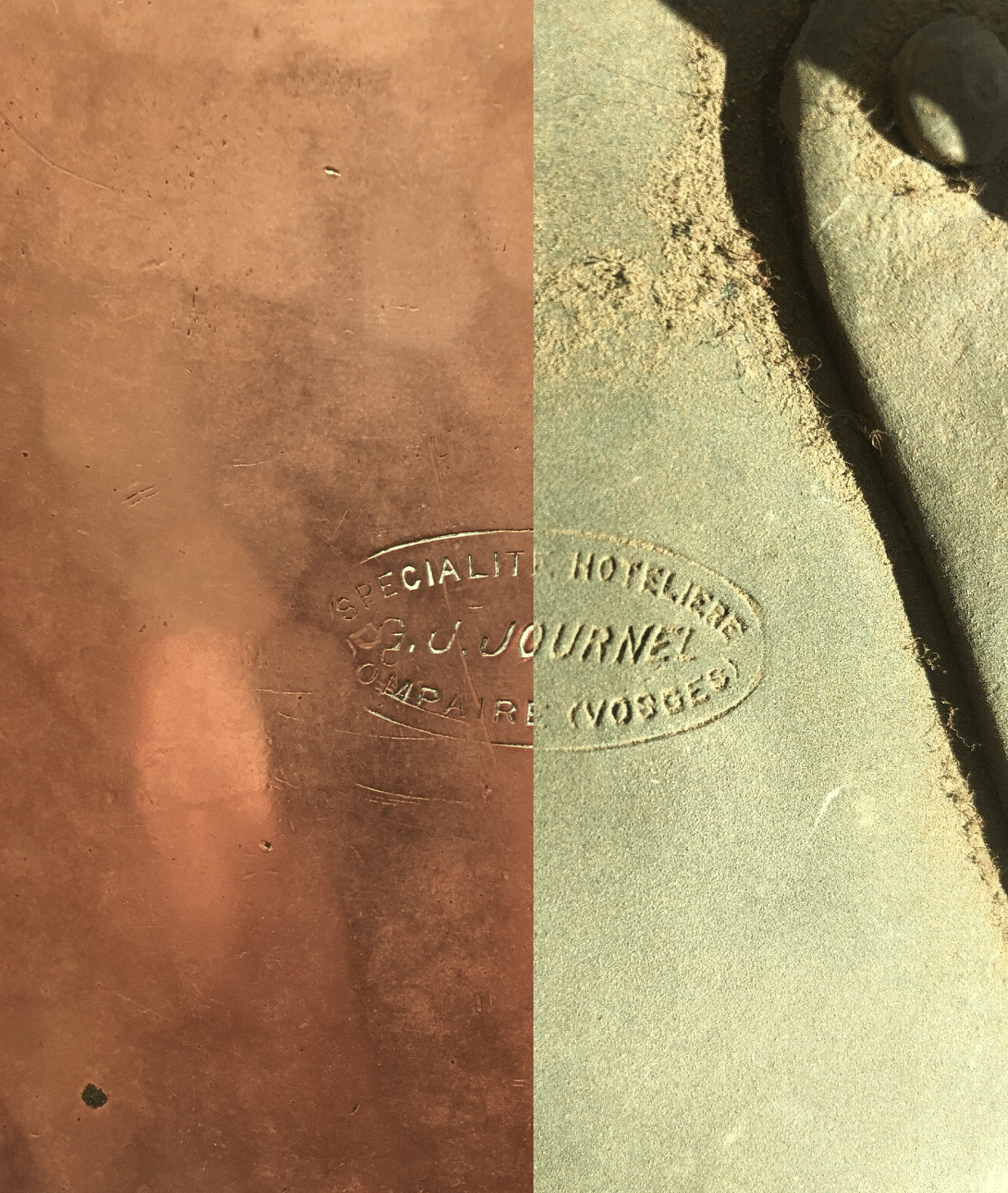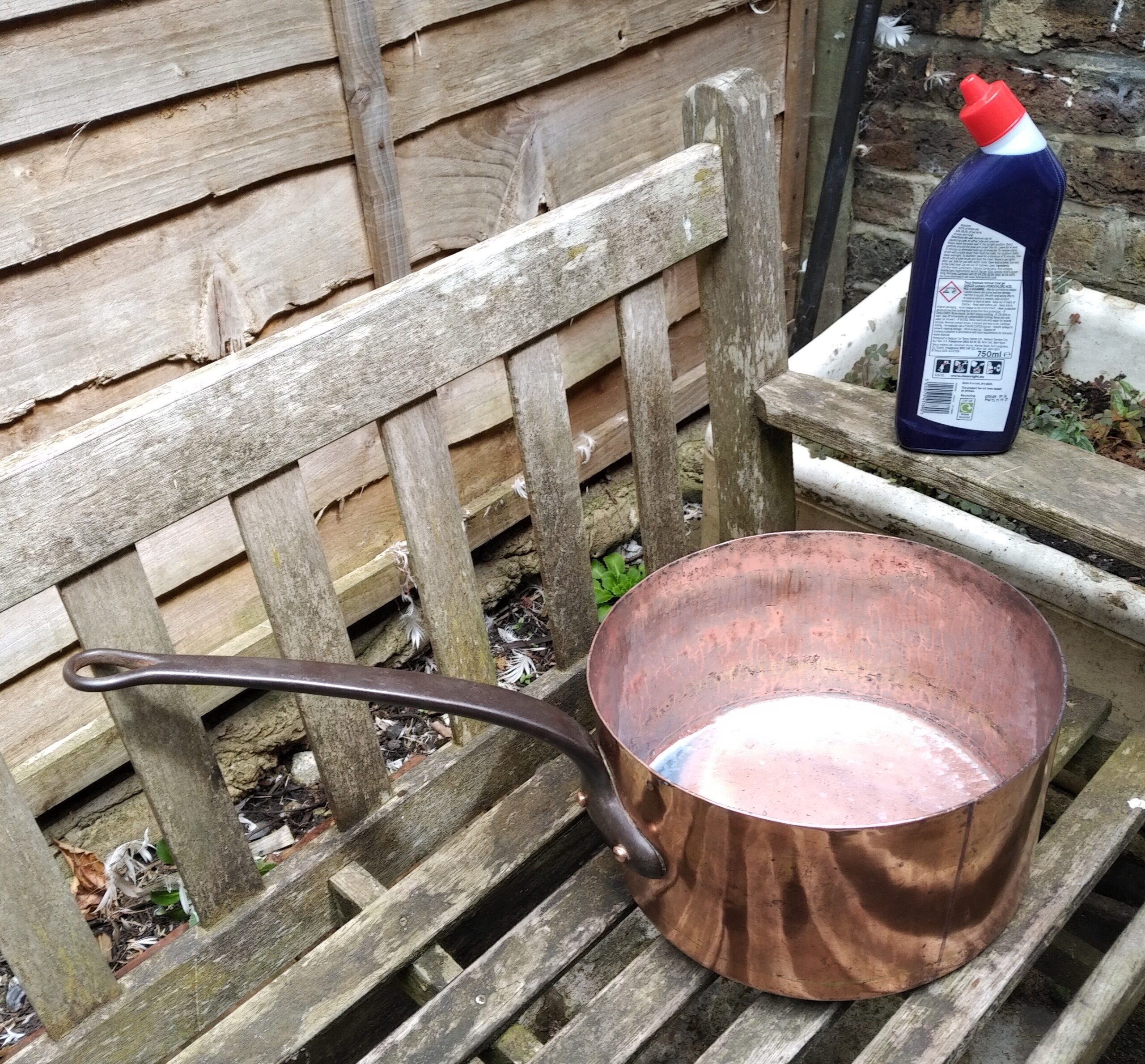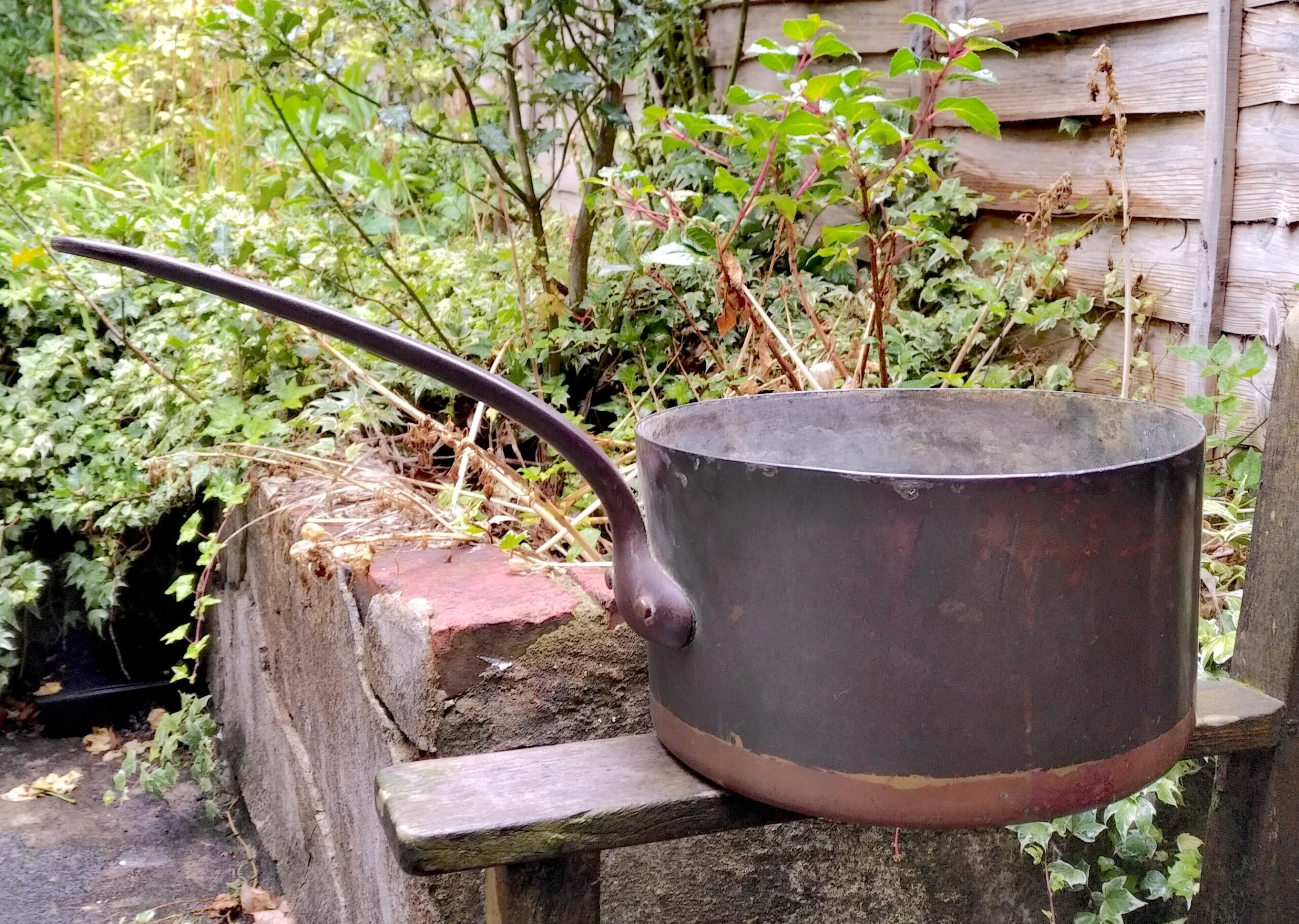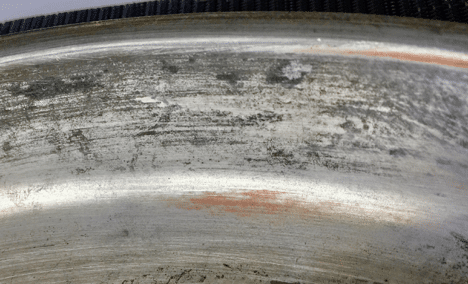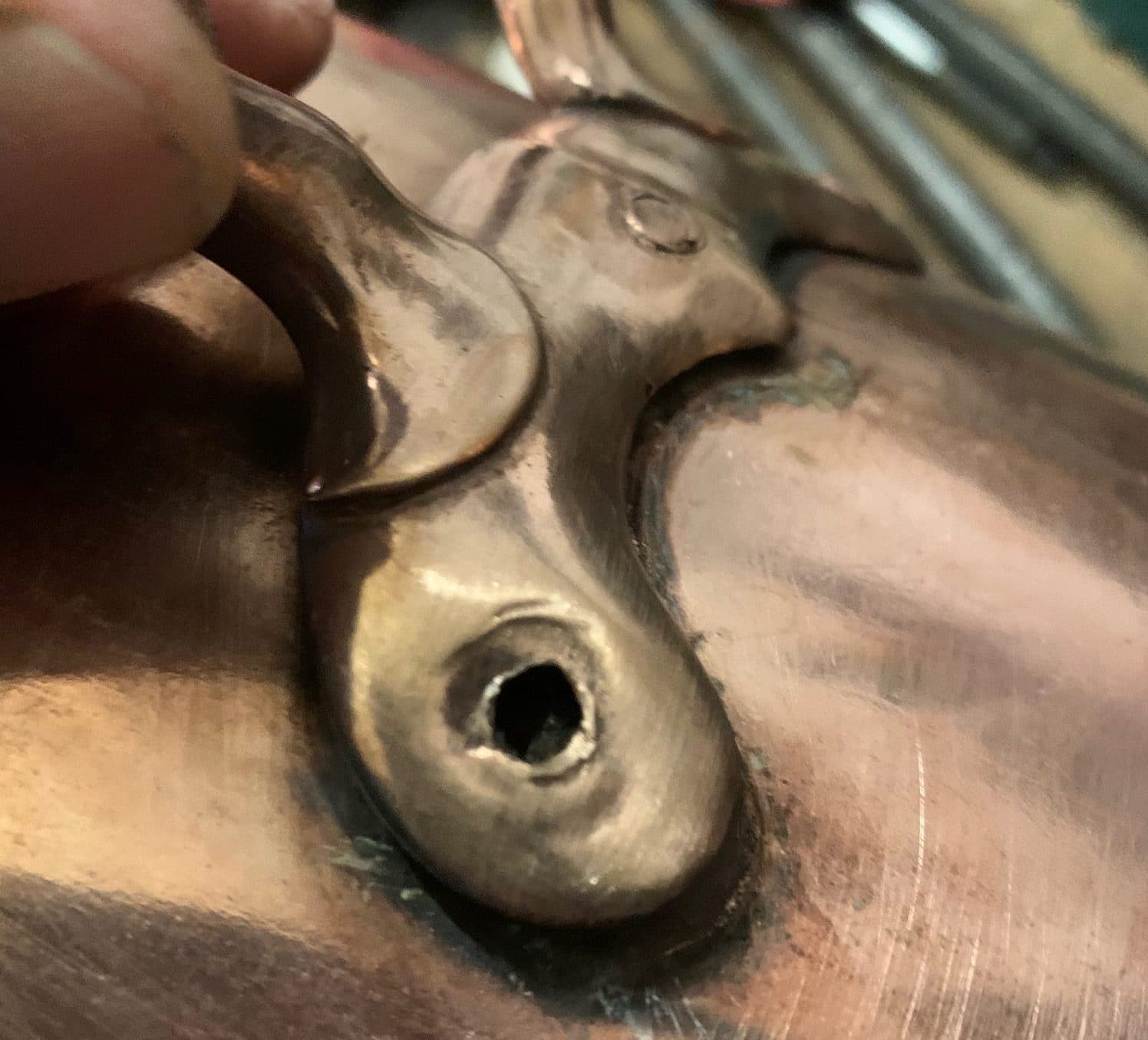Copper over years of use builds surface character; overly aggressive restoration can remove it.
The surface marks and discolorations that accumulate on the surface of a pot or pan as it is used are wordless testimony to decades of cooking and cleaning and polishing and all the good things that copper pans bring to our lives.
However, tin-lined copper pots need to be relined now and then. This high-heat, chemical-intensive process is also an opportunity to refurbish and repair the pot, to include giving it an all-over polish. But while a good retinner recognizes and protects surface character during this process, a less experienced one may not.
Allow me to present a cautionary tale.
Below is a bog-standard vintage 20cm (7.8 inch) Windsor (also called a sauteuse évasée). There are a lot of these available on eBay and Etsy because they were pretty popular a hundred years ago — they’re small, lightweight, and very useful. This is what a typical one looks like that I got from eBay.
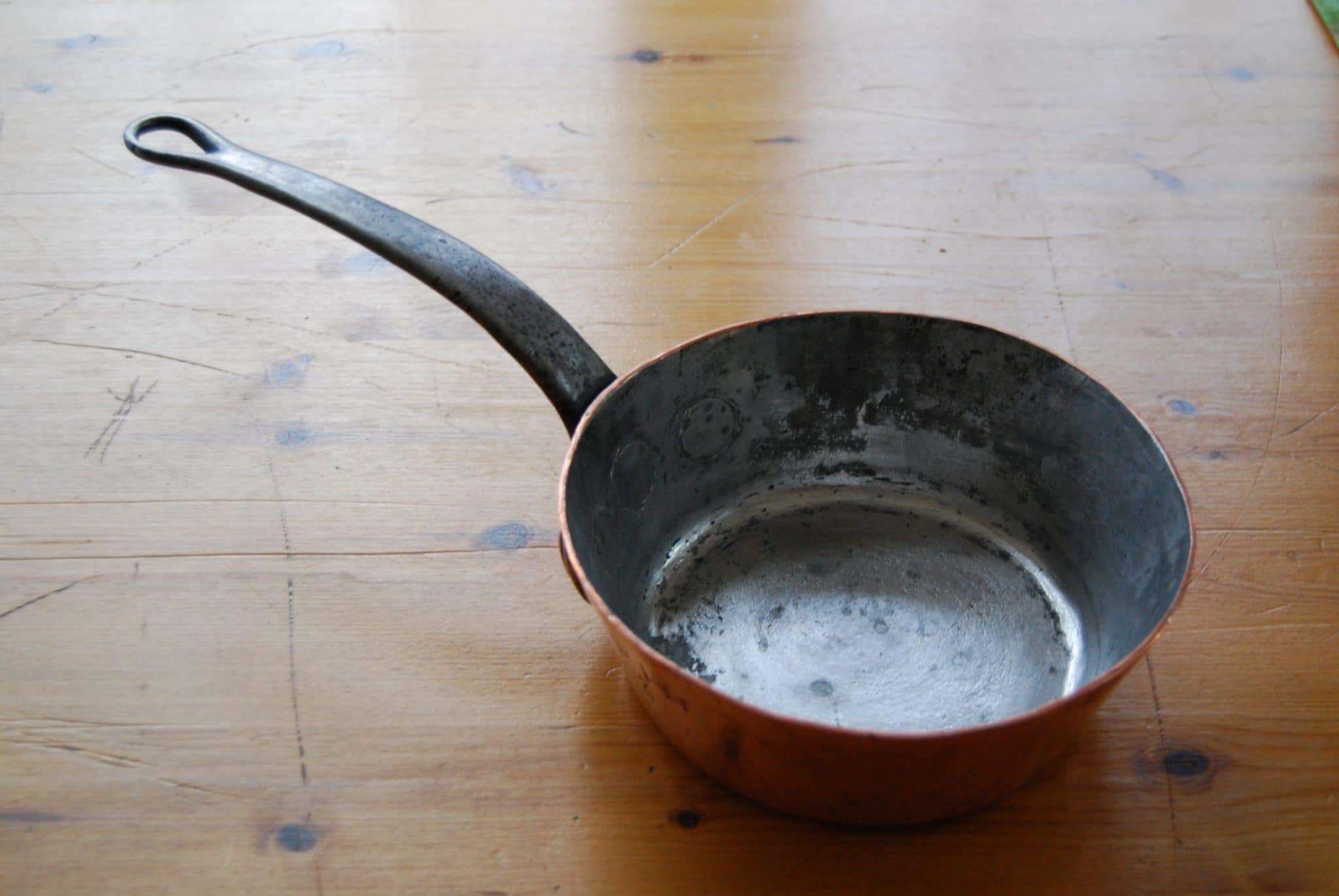
This little pot has great character. Those cracks, pits, and stampings give it oodles of personality. (It’s also got some iffy tin and could use a relining.)
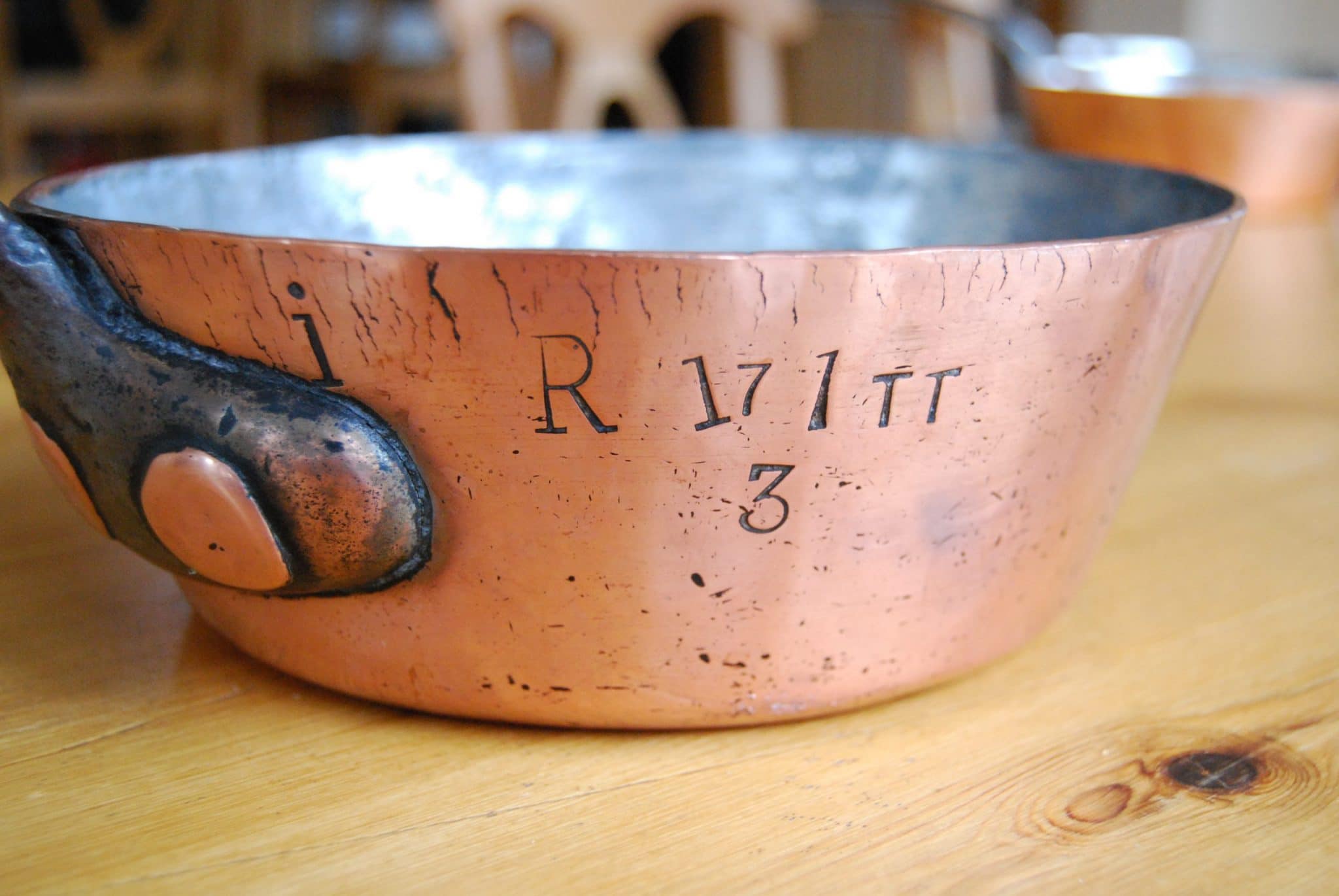
It’s got multiple owner’s marks that have been crossed out as the pot changed hands. And of course there’s an old-style Dehillerin stamp indicating that the pot was purchased at their store in Paris (and likely made by Dehillerin back when they had their own poêlerie).
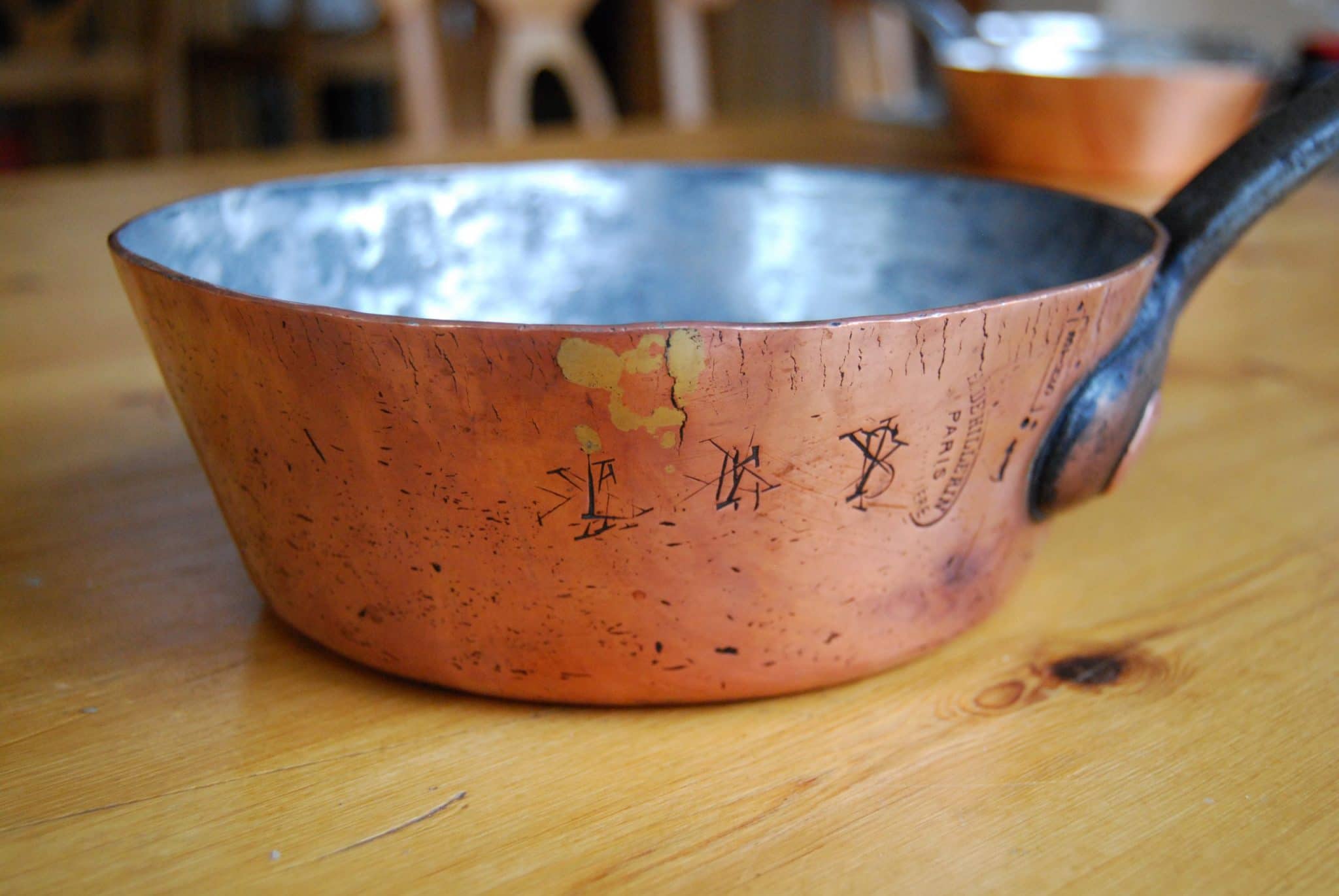
I happened to have its twin: a second 20cm Windsor of the same era with similar surface character and iffy tin. This one I packed off to a local metal plating shop* for retinning, and here’s how it looks now.
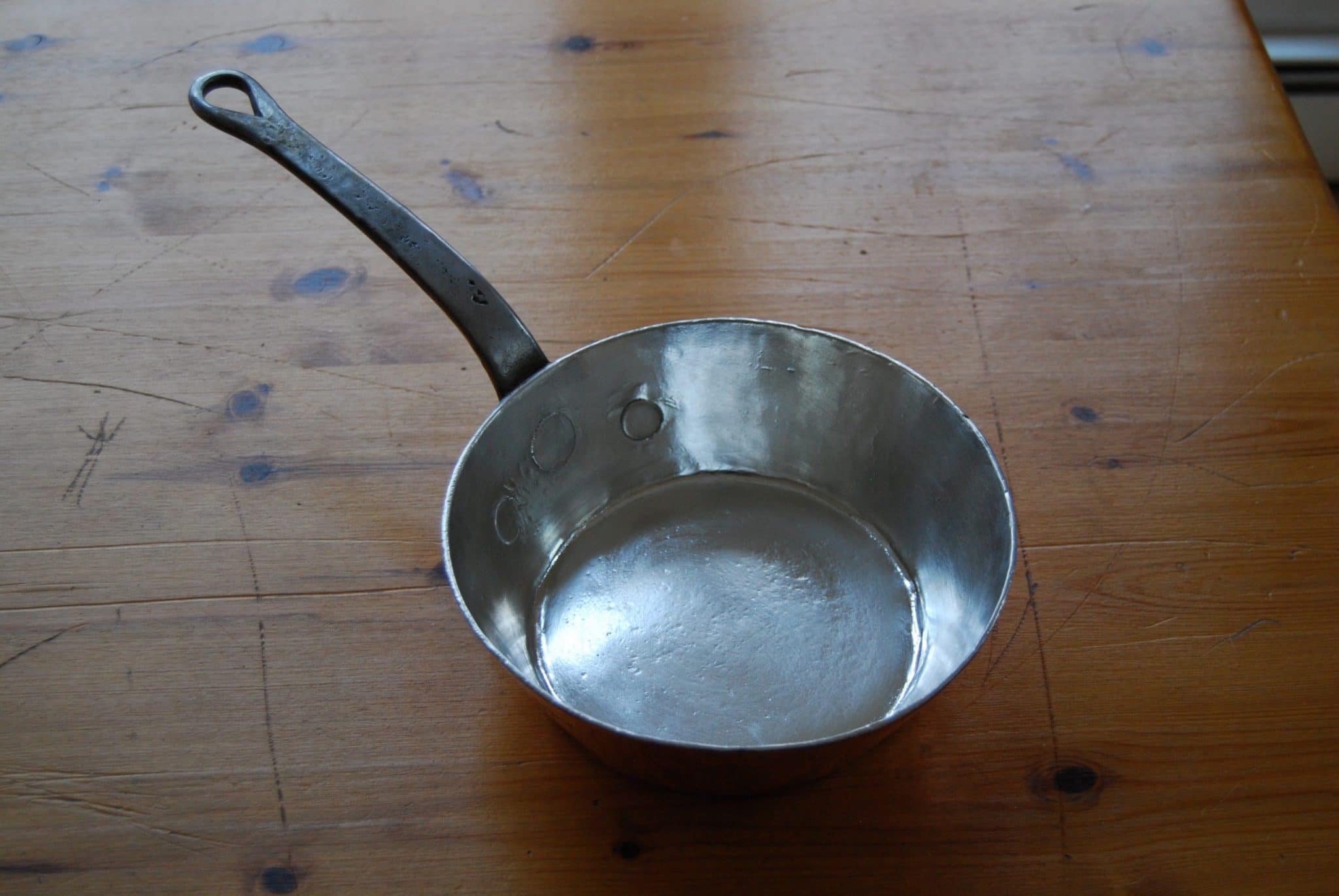
I mean, yay, right? All bright and clean inside. Ready to cook! But let’s take a look at the outside.
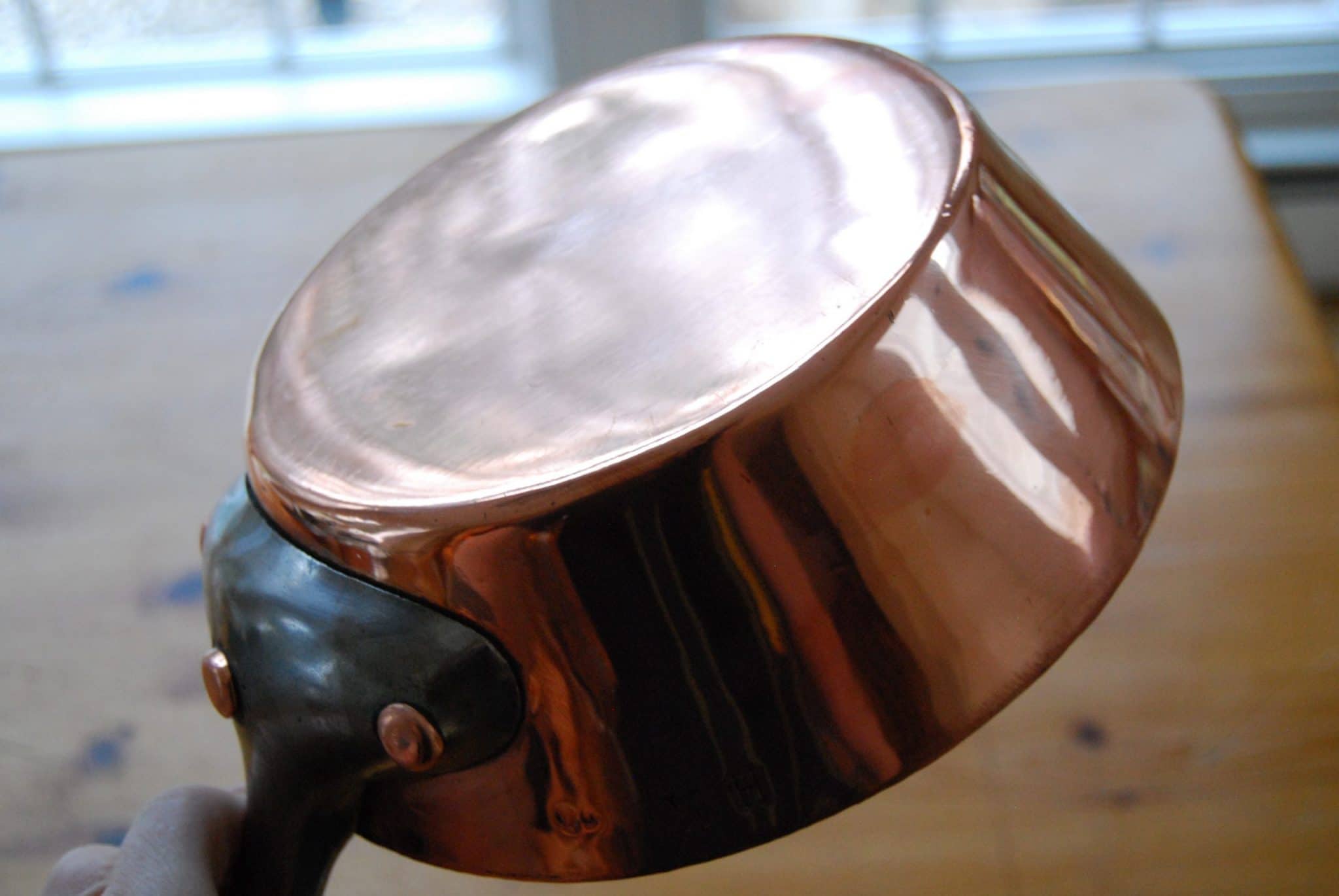
All the surface character is gone because the tinner has overzealously polished it all off.
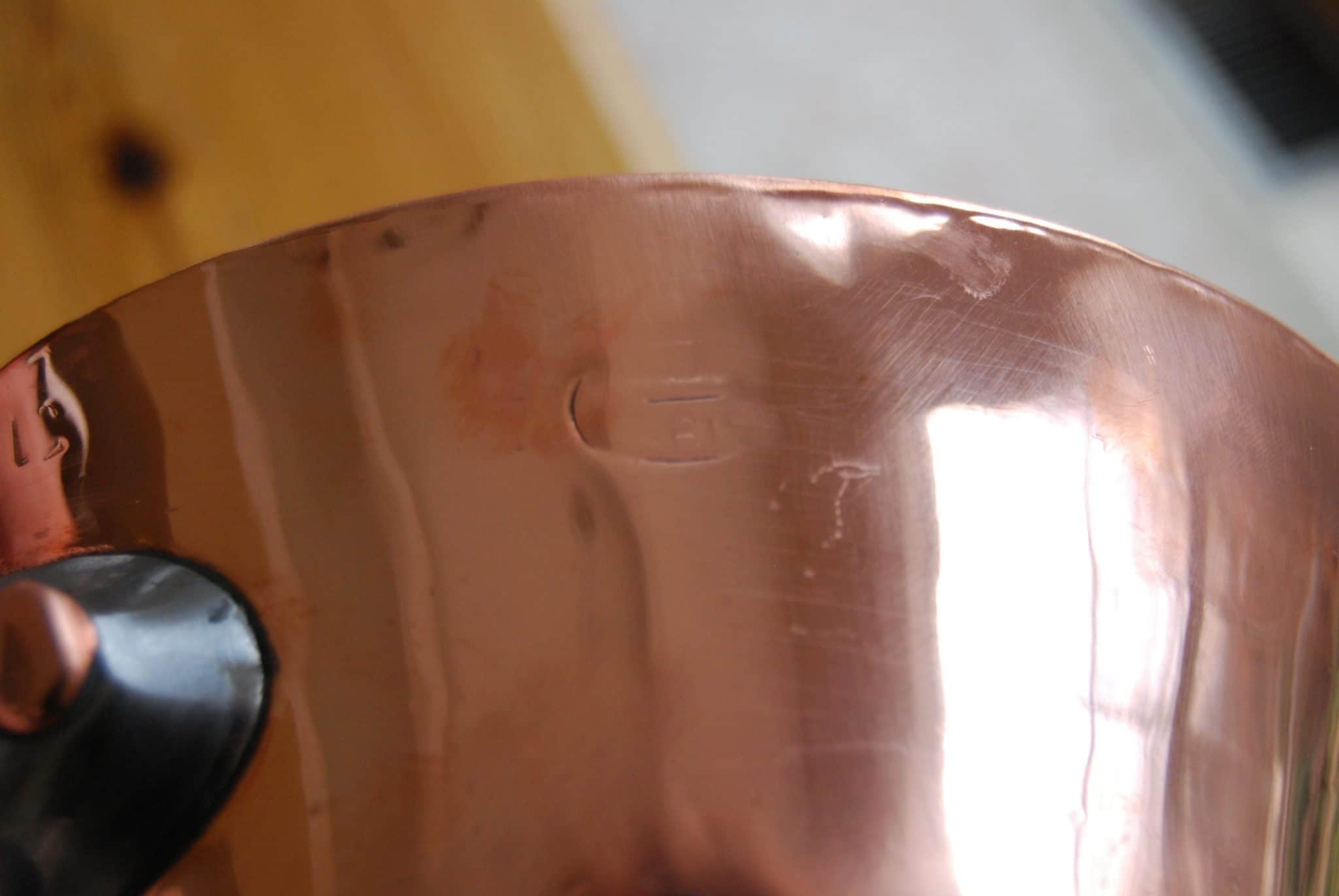
The owner’s marks and, even worse, the maker’s mark (in this case, Gaillard) are almost obliterated. I know this pan is Gaillard because I examined this pan before I sent it off and I can still recognize the shape of the stamp — the faint oval in the photo below — even when the letters are gone.
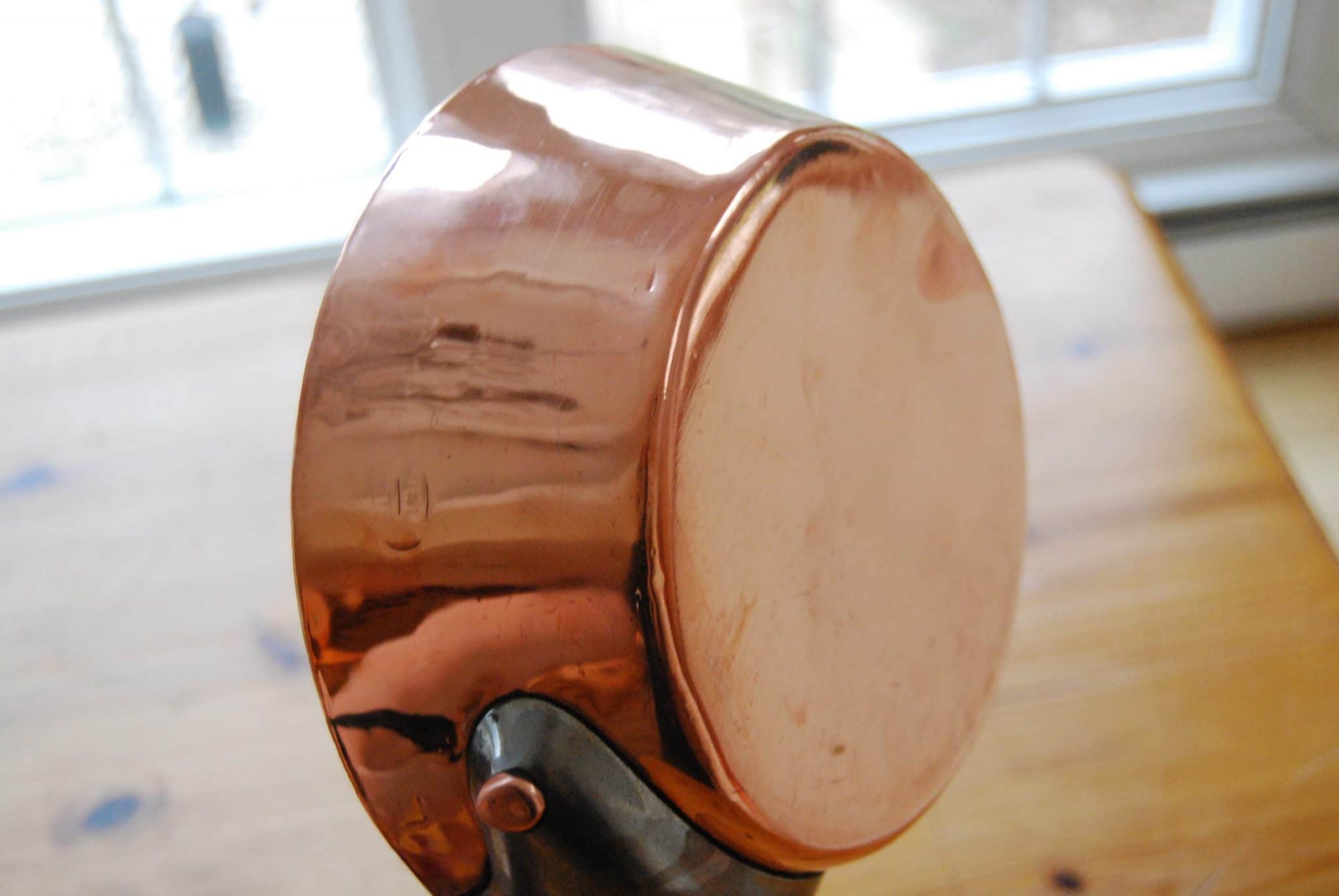
I wonder if this inexperienced tinner thought the pan was dirty. Some of the surface marks come from polymerized oil residue settled into cracks and crevices on the surface of the copper, so yes, it’s dirt. But again, from a copper collector’s perspective, this “dirt” is priceless.
Here are the twins now.
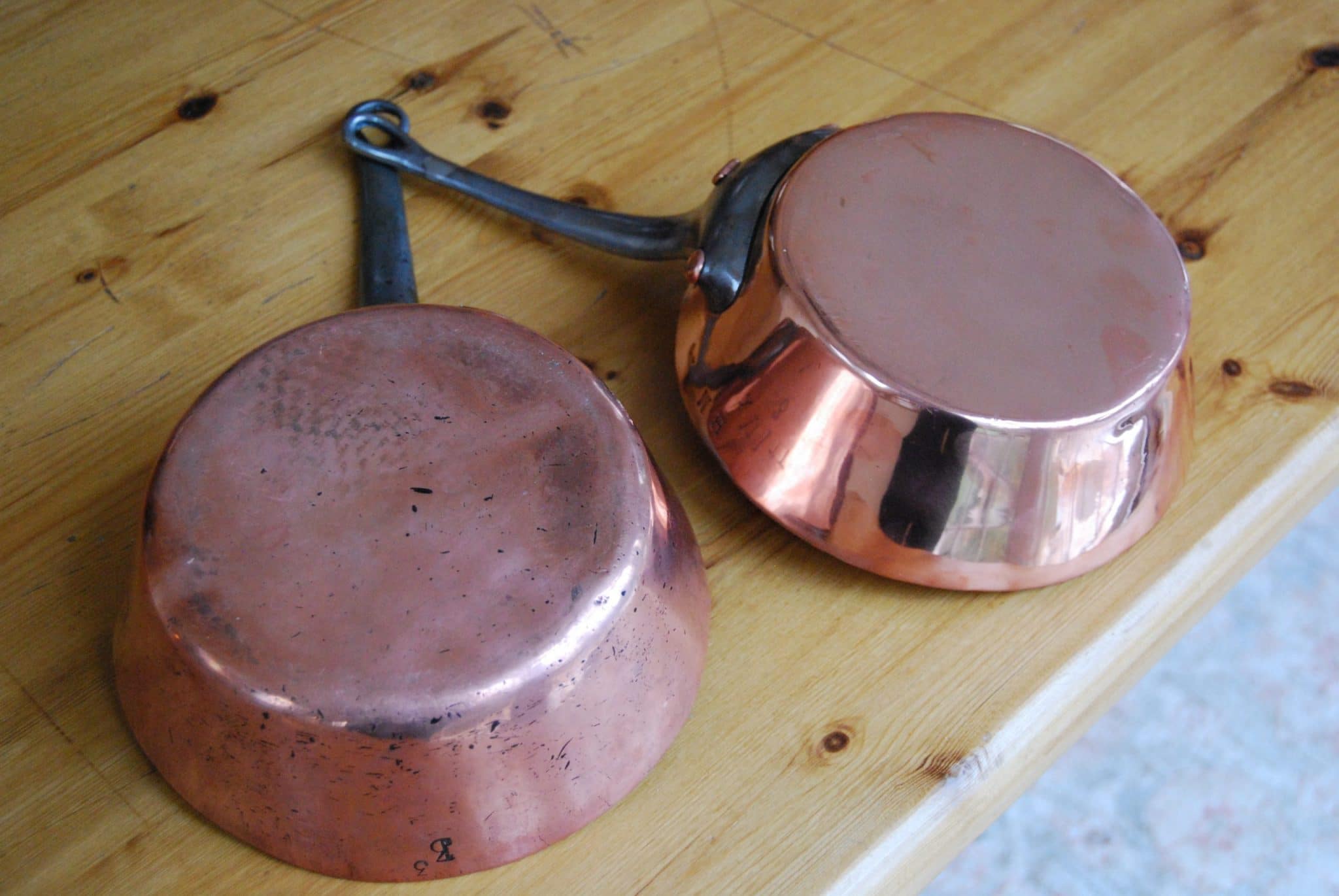
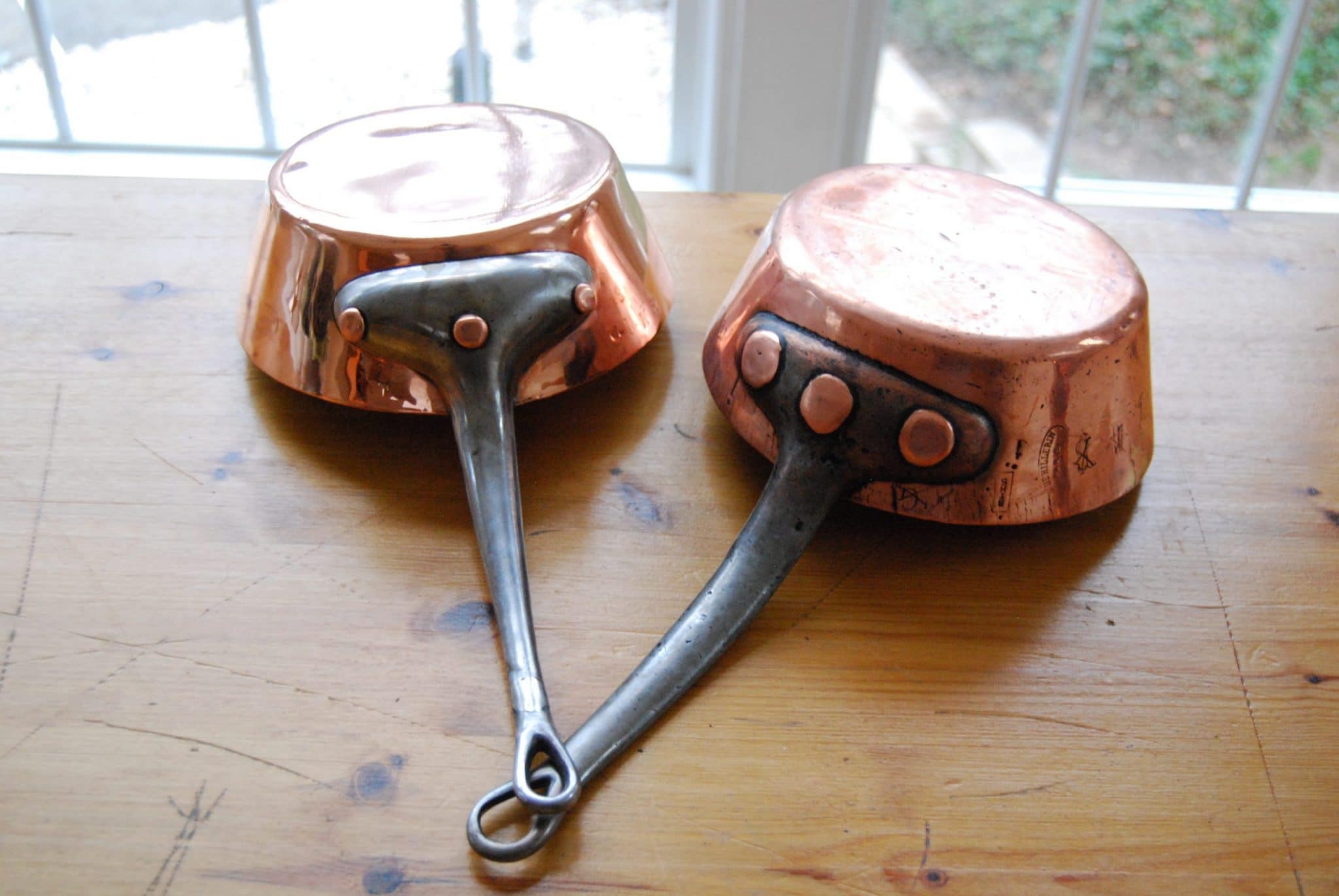
Is this highly-polished Windsor a lesser pan than its unimproved character-rich twin? Decide for yourself, but if preserving surface character is important to you, make sure your retinner knows this and is capable of preserving it.
* This over-polishing was done by a local shop and not by Rocky Mountain Retinning, Southwest Hand Tinning, or East Coast Tinning, each of whom fully appreciate character and protect it during their work.
